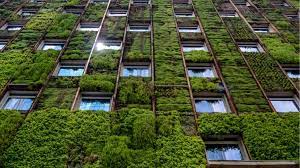As the world faces increasing environmental challenges, the need for sustainable and energy-efficient building practices has become more critical than ever. Green building, also known as sustainable or eco-friendly building, involves designing, constructing, and operating structures that have minimal negative impacts on the environment while maximizing their energy efficiency. In this blog, we will explore the importance of green building and highlight some key strategies for designing sustainable and energy-efficient structures.
Benefits of Green Building:
Green building practices offer numerous benefits, both for the environment and for building owners and occupants. Some of the advantages of green building include reduced energy consumption, lower operating costs, improved indoor air quality, enhanced occupant comfort, increased property value, and reduced carbon emissions. Green building also promotes the efficient use of resources, such as water and materials, and minimizes waste generation, contributing to a more sustainable future.
Key Strategies for Green Building:
There are several key strategies that architects, builders, and developers can implement to design sustainable and energy-efficient structures:
Energy-efficient design: Incorporating energy-efficient design principles, such as optimizing building orientation, maximizing natural lighting, and using high-performance insulation and windows, can significantly reduce the energy consumption of a building.
Renewable energy sources: Incorporating renewable energy sources, such as solar panels or wind turbines, can help buildings generate their own clean energy and reduce reliance on fossil fuels.
Efficient water use: Implementing water-saving features, such as low-flow fixtures, rainwater harvesting systems, and greywater recycling, can help reduce water consumption in buildings.
Material selection: Choosing sustainable and locally sourced materials, as well as using recycled or salvaged materials, can reduce the environmental impact associated with material production and transportation.
Indoor environmental quality: Incorporating features such as proper ventilation, low-emitting materials, and indoor plants can improve indoor air quality and occupant comfort.
Waste reduction and recycling: Implementing waste reduction and recycling practices during construction and operation can minimize the amount of waste sent to landfills and promote resource conservation.
Conclusion:
Green building practices are crucial in mitigating the environmental impacts of the built environment and promoting sustainable and energy-efficient structures. By incorporating strategies such as energy-efficient design, renewable energy sources, efficient water use, responsible material selection, indoor environmental quality, and waste reduction and recycling, we can create buildings that are not only environmentally responsible but also provide economic and social benefits. As architects, builders, and consumers, we have a responsibility to prioritize green building practices to create a more sustainable and resilient built environment for future generations.




